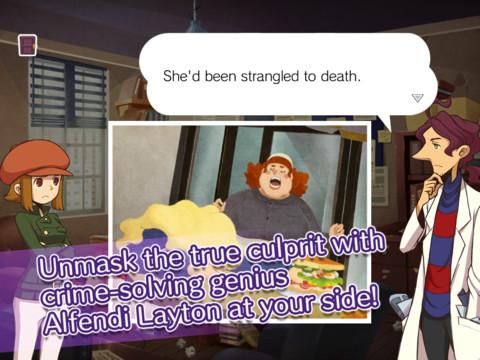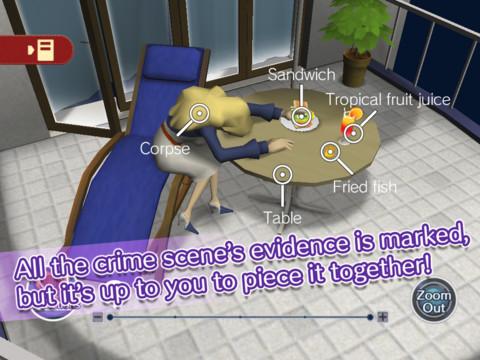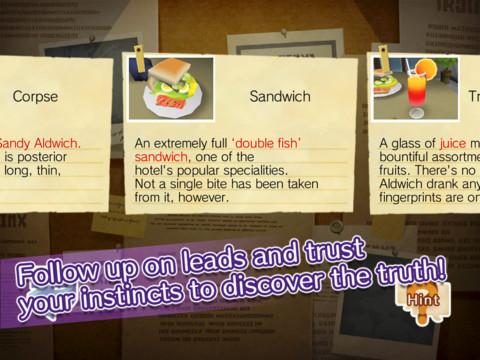- Wondering how to get Monopoly GO! free rolls? Well, you’ve come to the right place. In this guide, we provide you with a bunch of tips and tricks to get some free rolls for the hit new mobile game. We’ll …
Best Roblox Horror Games to Play Right Now – Updated Weekly
By Adele Wilson
Our Best Roblox Horror Games guide features the scariest and most creative experiences to play right now on the platform!The BEST Roblox Games of The Week – Games You Need To Play!
By Sho Roberts
Our feature shares our pick for the Best Roblox Games of the week! With our feature, we guarantee you'll find something new to play!Type Soul Clan Rarity Guide – All Legendary And Common Clans Listed!
By Nathan Ball
Wondering what your odds of rolling a particular Clan are? Wonder no more, with my handy Type Soul Clan Rarity guide.
Layton Brothers: Mystery Room Review
Layton Brothers: Mystery Room puts players in the gumshoes of Lucy Baker, the newest deputy constable at London’s New Scotland Yard Serious Crime Division Classified Investigation Agency Headquarters, or the Mystery Room for short. Lucy signs on as the assistant to Professor Alfendi Layton, investigator extraordinaire and highly capable son of the riddle-loving, tea-drinking Hershel Layton of Nintendo DS fame. While Alfendi’s focus is on heinous murders instead of peculiar artifacts, the same keen eye and puzzle-solving capabilities that served the elder Layton will help Alfendi snag criminal suspects.

A new direction for the Layton family.
Layton Brothers: Mystery Room puts players in the gumshoes of Lucy Baker, the newest deputy constable at London’s New Scotland Yard Serious Crime Division Classified Investigation Agency Headquarters, or the Mystery Room for short. Lucy signs on as the assistant to Professor Alfendi Layton, investigator extraordinaire and highly capable son of the riddle-loving, tea-drinking Hershel Layton of Nintendo DS fame. While Alfendi’s focus is on heinous murders instead of peculiar artifacts, the same keen eye and puzzle-solving capabilities that served the elder Layton will help Alfendi snag criminal suspects.
Lucy and Alfendi’s adventures take place through a series of nine case files that must be completed in order. While separate, these cases work together to tell the tale of Lucy’s growth as a detective and slowly reveal the personal demons that plague Alfendi. Early cases rely heavily on Alfendi’s guidance and intuition, but by the end of the game Lucy will have to make decisions herself, heightening the sense of challenge and accomplishment for the player as well.
Cases follow a standard format and procedure: the Mystery Room receives a request to work on a case, usually by another detective. Alfendi and Lucy review the details of the murder and the statements of the—usually three to four—suspects. After this, Lucy is free to investigate the virtually reconstructed crime scene for five minutes and track down all the evidence she can. Alfendi will offer his guess on who the culprit is, usually with a high rate of certainty (he is a Layton, after all), and this suspect will be brought in for additional questioning. Lucy and Alfendi will then begin working through deductions, or outstanding questions, that will confirm the identity of the killer and events of the crime.
These deductions are the crux of the gameplay in Layton Brothers. Presented as note cards on a memo board, every deduction must be solved before officially fingering a suspect. Deductions range from investigating the victim’s body to confirm cause of death, to locating the murder weapon, to resolving strange circumstances like a permanently locked room. Lucy will need to search the crime scene for specific evidence and answer questions pertaining to these issues in order to progress.
Searching the crime scene is one of the most potentially engaging aspects of Layton Brothers‘ gameplay, but Level-5 has erred on the side of over simplicity. Every area that can be investigated in-depth is automatically circled on the scene. Tapping on one of these circles opens a close-up of the area, with every clickable object already highlighted and named. The only additional “investigation” needed is zooming in on these scenes to locate objects that might be initially out of view—but this ends up merely requiring a quick zoom-in to see yet another highlighted object.
Once an obvious item has been tapped, its info sheet will appear and be entered into evidence. This is true for every item encountered, useful or not, so the list of evidence can quickly fill up with “chairs” and “houseplants” for the overly ambitious investigator. While some deductions allow you to display only relevant evidence while solving them, many will force you to sort through your entire list of evidence individually to find the piece you’re looking for, which discourages investigating rooms beyond a cursory search for key items.
This seems drastically at odds with Layton Brothers‘ focus, considering the five-minute period of open investigation Lucy is offered on each case. However, this period is entirely optional and ultimately provides no benefit to the case: evidence found during this time must be rediscovered while solving deductions. If you located the murder weapon during this initial investigation, Alfendi will still ask you to locate the murder weapon again during the weapon-related deduction and Lucy will act like she’s never seen it before, making this section of each case frustratingly redundant, but thankfully skippable.
With a lack of challenge to the actual investigations, Layton Brothers‘ emphasis becomes dialogue and character interactions. The charming, hand-drawn portraits are filled with personality that is missing from the drab and blocky crime scenes. Alfendi’s Jekyll-and-Hyde-style persona swaps add an air of overarching mystery to each investigation that comes to a gripping resolution in the final three cases. Although Lucy’s accent and dialectic use of terms like “were” in place of “was” or “summat'” in place of “something” require acclimation, by the end of the game she’s come into her own both as a detective and character. Interrogations take on a high-energy, battle royale format reminiscent of Phoenix Wright, with evidence literally thrown into suspects’ faces and their defensive retorts spat like daggers at our detective duo.
The end result is a game that is too easy, but still highly engaging. Each case features a clever twist that you may see coming, but is still a treat to help unfold. The last three cases resolve some of the issues of earlier, easier levels with less advice from Alfendi and more benefit to actual investigation. Complete with a gorgeous noir soundtrack, Layton Brothers: Mystery Room is an endearing interactive detective novel that holds your hand for too long and finally shines when it lets go.

The good

The bad
More articles...
Monopoly GO! Free Rolls – Links For Free Dice
By Glen Fox
Wondering how to get Monopoly GO! free rolls? Well, you’ve come to the right place. In this guide, we provide you with a bunch of tips and tricks to get some free rolls for the hit new mobile game. We’ll …Best Roblox Horror Games to Play Right Now – Updated Weekly
By Adele Wilson
Our Best Roblox Horror Games guide features the scariest and most creative experiences to play right now on the platform!The BEST Roblox Games of The Week – Games You Need To Play!
By Sho Roberts
Our feature shares our pick for the Best Roblox Games of the week! With our feature, we guarantee you'll find something new to play!Type Soul Clan Rarity Guide – All Legendary And Common Clans Listed!
By Nathan Ball
Wondering what your odds of rolling a particular Clan are? Wonder no more, with my handy Type Soul Clan Rarity guide.








 “
“ “
“